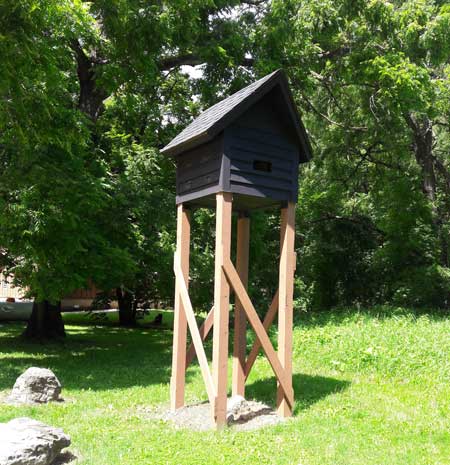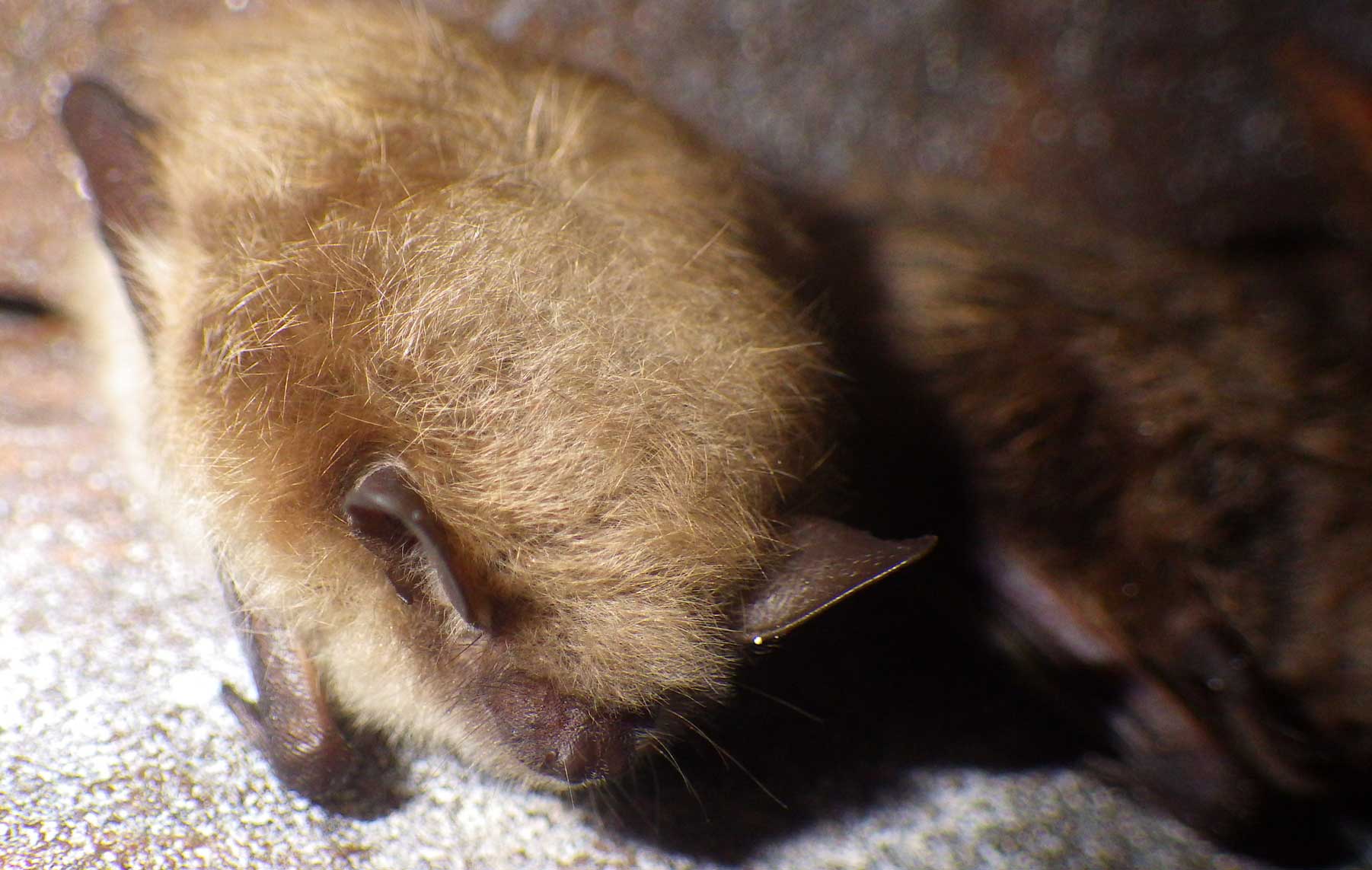Bat Housing As One Antidote To The Catastrophic White-nose Syndrome
By Deborah Locke, DNR Information Officer
Deborah Locke interviewed Parks and Trails Resource Management Supervisor Ed Quinn about the health of Minnesota bats. Below is their conversation.
Deborah Locke: So Ed, tell us about the bat situation in Minnesota.
Ed Quinn: Well, it is a two-story tale. Minnesota is home to eight bat species. For bats that migrate southward from Minnesota in the winter – eastern red bats, hoary bats – their populations are ok. The ones that hibernate here — little brown bats and northern long eared bats — they have had a catastrophic population decline due to White-nose Syndrome. It is a fungus introduced to the eastern United States from Europe in the early 2000’s. Now over 95 percent of the hibernating bats in in Minnesota are gone.
DL: Ninety-five percent? How do you know that?
EQ: In some of the larger caves and mines where bats hibernate, we’ve done counts of hibernating populations for many years. White-nose Syndrome irritates bats, getting into their skin and membranes which causes them to wake, using up precious energy reserves. Sometimes they leave the hibernaculum to either search for food or to try to reduce the symptoms. In either case they succumb to the disease because they have used up their energy reserves — or they have left the hibernaculum — exposing themselves to freezing winter temperatures where they can’t find insects.
DL: What solution did the DNR arrive at?
EQ: Our goal is to ensure that adult bats returning to the hibernaculum are in great shape and their pups are, too. Most species of bats only produce one pup each year. Our job is to install, move or replace bat roosting structures to optimize the survival and condition of migratory bats so they return to the hibernaculum in the best shape possible.
DL: Ed, wait a minute. Are you telling me that female bats only have one baby per year?
EQ: That’s true for most bat species.
DL: So, the reduced number of bats overall means what to every other part of wildlife?
EQ: Fewer little brown bats and northern long eared bats because of WNS means more food and habitat is available for species such as eastern red and hoary bats. That’s good news for the migrating bats. Still, there are fewer bats overall, and that means an increase in the insect population which could impact farm crops and forests
DL: It seems to follow then that the number of migratory bats is increasing.
EQ: That’s possible as they potentially find more habitat and food available.
DL: Could the loss of year-round bats rectify itself as other bat migrating species move in?
EQ: Possibly, but it would still take a very long time because bats produce so few young. We are seeing a bottoming out of the populations of species like little brown bats. This past winter, though, we didn’t see an increase in numbers of hibernating bats, and we did not see any bats with symptoms of WNS. That suggests those bats remaining are surviving with WNS which is what they’ve seen with bats in the eastern U.S. Either they are resistant or immune to WNS, and it’s those bats that will rebuild the population.
Much of this situation is out of our control. What we can do is ensure that hibernating bats aren’t disturbed by human activity and provide structures that are safe from predators and provide an optimal environment for bats in the summer to roost and to raise their young.
DL: Tell us about the structures
EQ: Most look like a large birdhouse. There’s no entry hole; the bats enter from underneath. We call some structures bat condos because they are the size of a doghouse and can hold hundreds of bats.
DL: How many has the DNR put up?
EQ: There are about 135 roosting structures across the state park system with this current project, which gets funding assistance from the Natural Resources Trust Fund. We are monitoring the boxes to learn more about which characteristics – such as temperature – are most important for bats. We’ll then be moving or replacing boxes that aren’t being utilized to improve their chances of being used by roosting bats.
DL: How long before the non-migratory bat species here return to pre-WNS numbers?
EQ: It’s hard to say but it will be a very long time. In Europe scientists think populations there are smaller than before WNS impacted their bats. The same result could happen in the US.
We are at the very beginning of population rebuilding. We hope to see an increased count next year. They are starting to see some small increases in bat numbers in Wisconsin.
DL: Where can I find more information?
EQ: You could go to the Bat Conservation International website. (See https://www.batcon.org/) or the MNDNR web page Bats of Minnesota (See https://www.dnr.state.mn.us/mammals/bats.html)
Images courtesy Minnesota DNR

















